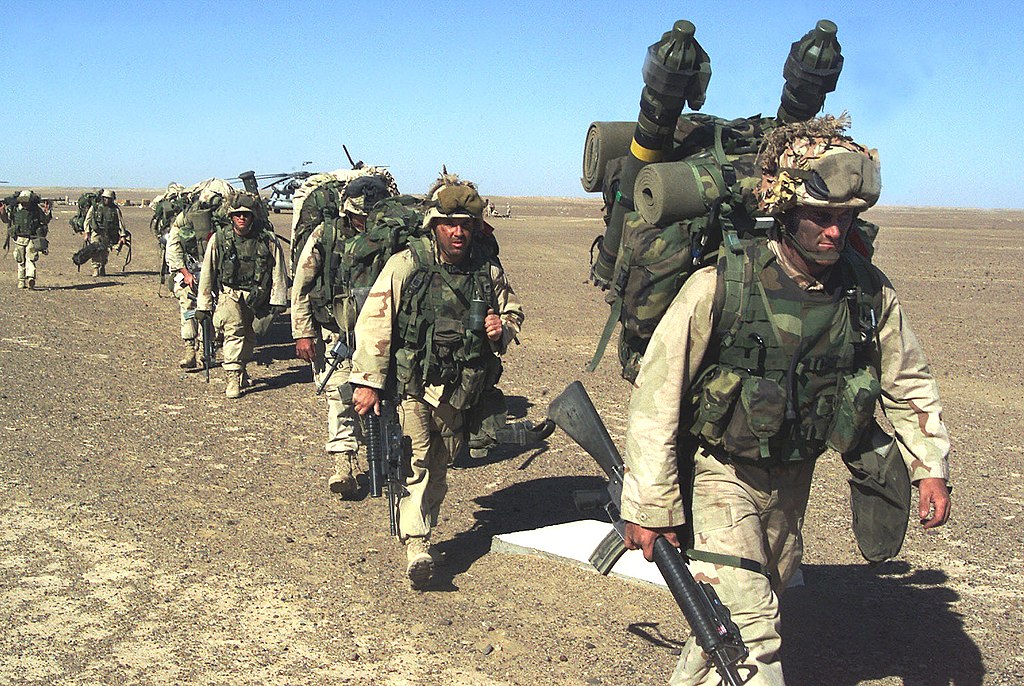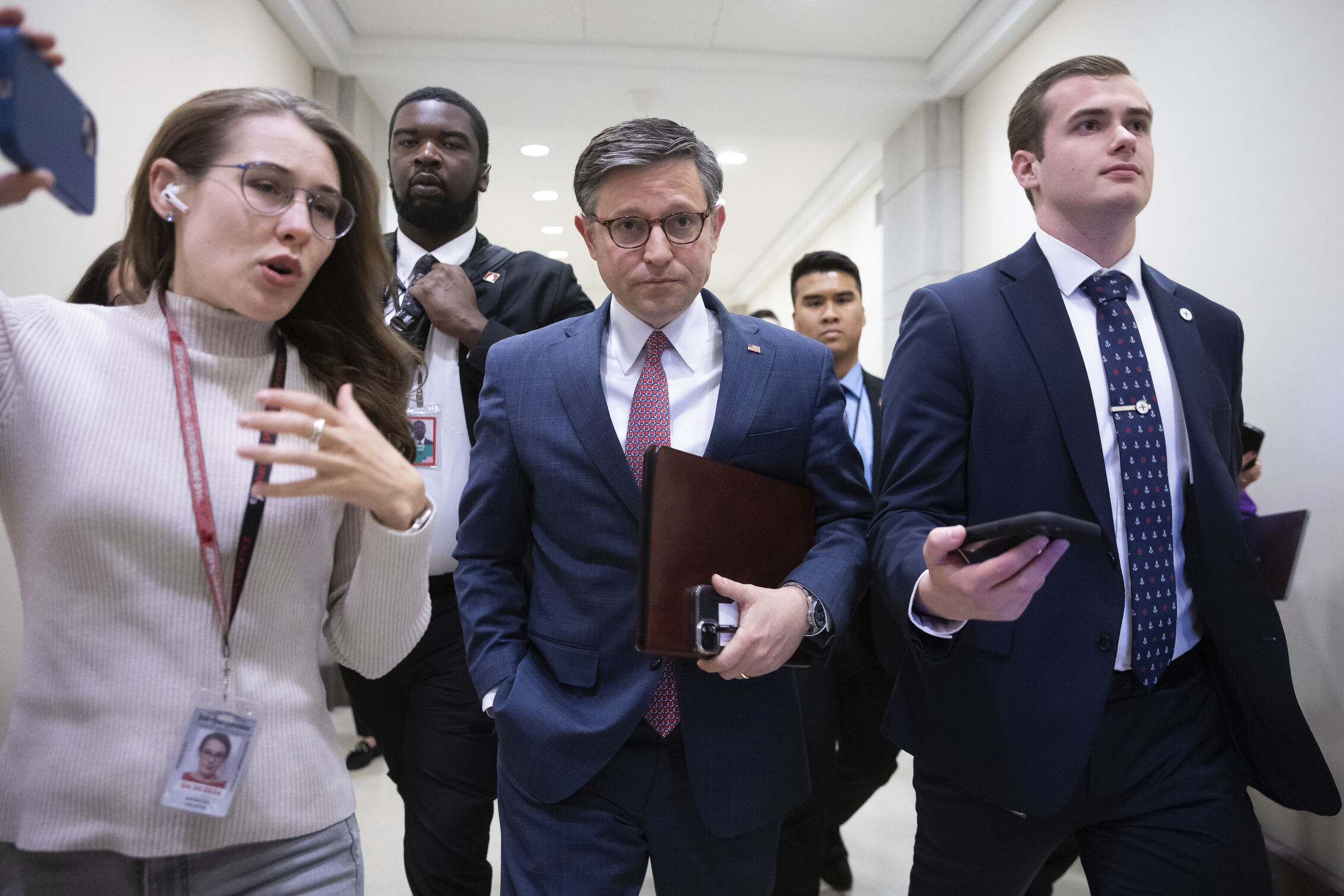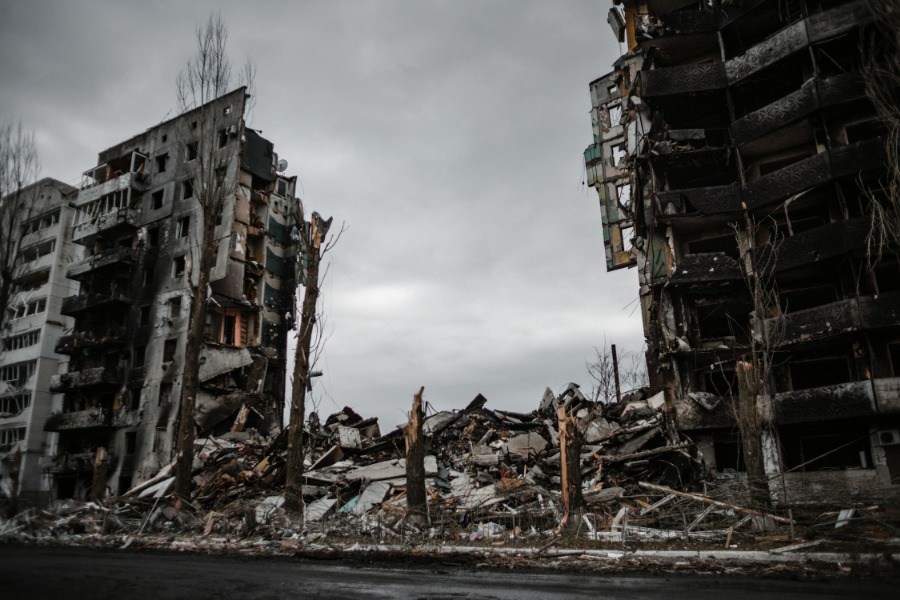The Afghanistan Papers and the Perils of Historical Analogy
What explains the general lack of interest in the Afghanistan Papers? Why didn’t this trove of declassified documents catch fire like the Pentagon Papers during Vietnam?

Published by The Lawfare Institute
in Cooperation With

On Dec. 9, 2019, the Washington Post released to great fanfare what it presumably hoped would be a bombshell along the lines of the New York Times’s explosive “Pentagon Papers,” published in 1971, and indeed framed the coverage as such. Their so-called “Afghanistan Papers” (note the similarity in the nomenclature) were internal documents produced by the Special Inspector General for Afghanistan Reconstruction (SIGAR) as part of their ongoing documentation project to identify lessons learned during the war. In the documents, senior military and civilian government officials revealed in retrospect their unvarnished doubts and candid frustrations about the war during interviews with the SIGAR—an agency the primary purpose of which is to eliminate corruption and duplicative U.S. efforts in Afghanistan. Along with the story, the Post released the original documents and a 17-minute video explanation.
Although some journalists were quick to embrace the Washington Post’s characterization of its reporting as “new Pentagon papers,” like New Year’s Eve fireworks, after a bright flare, everything was as it had been by the following day. It seems clear, more than a month after they were first published, that the Washington Post’s Afghanistan Papers were a resounding dud. While Congress did call Special Inspector General John Sopko to testify on Jan. 15 about the troubling details revealed in the documents, the Washington Post was the only major newspaper to cover the testimony. This is not to say that the Post’s reporting is unimportant or that it is better not to have access to the primary source documents that they secured legally. As a historian, I will be the first to welcome newly declassified documents as a window to understanding how the U.S. government assessed and grappled with its longest war. But what explains the lack of broader interest on the part of the American people? Why didn’t this trove of declassified documents catch fire like the Pentagon Papers during Vietnam, or like the more recent documents pilfered by Chelsea Manning and published by WikiLeaks in 2010, or the Snowden files published by several outlets in 2013?
Surely there are some obvious, and rather shallow, answers that can offer a rough idea of why the story vanished from the front pages and social media so quickly, including the competing media coverage of the impeachment proceedings and the Democratic presidential primary debates. However, this post will identify deeper reasons why the Washington Post’s story was not the revelation nor bombshell that they likely wished for. As historians Richard Neustadt and Earnest May warned in their book about using historical analogies, there is peril in misapplying historical parallels to contemporary situations. Although Neustadt and May wrote primarily for policymakers and wonks, their observations are equally as important for the Fourth Estate. In the present case, trying to tee up the story as the Pentagon Papers of the post-9/11 era relied on too many inaccurate historical parallels in which the differences outweigh the similarities. To understand why the story did not seem to have staying power, it’s worth exploring some commonalities and contrasts between the Pentagon Papers and the Afghanistan Papers.
To remind readers, the Pentagon Papers—officially the “Report of the Office of the Secretary of Defense Vietnam Task Force”—chronicled America’s increasing political and military involvement in (and around) Vietnam between 1945 and 1967. They revealed a glaring disconnect between the Johnson administration’s public rhetoric about America’s reasons for fighting in Vietnam—that is, guaranteeing South Vietnamese freedom and supporting allies—and the reasons the U.S. government actually decided to remain engaged—that is, to avoid a humiliating defeat and, to a lesser extent, to contain China. In the Pentagon Papers, some Pentagon analysts assessed that the Vietnam War was unwinnable, but the study and resulting report were classified, presumably so that its bleak conclusions would not become public. Daniel Ellsberg, an analyst assigned to work on the study, believed that its conclusions should be made public. He unsuccessfully tried several avenues to make them public before ultimately giving those conclusions to the New York Times. Ellsberg’s name is now synonymous with “whistleblower,” and he is often invoked as the original Chelsea Manning or Edward Snowden, although the latter pair are certainly not whistleblowers, a legal category of people who report perceived wrongdoing through various appropriate channels and enjoy protections for doing so. In contrast, leakers, like Ellsberg, Manning and Snowden, elide the channels set out for them and faced—to varying degrees—criminal consequences. As will be observed in the analysis below, document provenance matters.
Both the Pentagon Papers and the Afghanistan Papers would seem, at first blush, to have much in common. Chief among the cursory commonalities is that, in both cases, the Pentagon’s military and civilian leadership seemed to understand, in private, the unwinnable nature of an ongoing conflict in which American troops were being asked to risk their lives, but in public gave only optimistic assessments about how victory was within reach and could be achieved with just a little more effort to consolidate alleged battlefield gains and solidify political progress. To underscore their sanguine assessments, political appointees and military officials seemed to manipulate or distort various statistics to provide hard metrics to bolster their claims of progress or various bright spots as causes for optimism to combat a continued drumbeat of mostly negative reporting. Successes in both cases (such as they were) seemed inflated, and setbacks were downplayed. To many observers, the activities in both cases smacked of a cover-up in which the truth was cynically hidden from the American people under claims of national security classification.
Similarities between the Afghanistan and Vietnam lessons learned projects were striking in terms of strategic confusion about a common theory of victory. Retired Lt. Gen. Douglas Lute, who served as a kind of White House czar for the war in Afghanistan, confided to SIGAR after his service that “[w]e were devoid of a fundamental understanding of Afghanistan—we didn’t know what we were doing.” You didn’t need to be a soldier or an embedded reporter in Afghanistan to see the truth in Lute’s assessment. Veterans, development experts and scholars had been questioning America’s mission and strategic choices in Afghanistan for years. As the war in Afghanistan dragged on, the Afghan culture and human and physical terrains remained as alien to Americans serving there as Vietnam was to the Americans serving there a generation before.
Like in Afghanistan, the Vietnam War’s managers were also, to modify Lute, “devoid of a fundamental understanding” of Vietnam and thus the character of the conflict. As Vietnam War historian Gregory Daddis explained, “The problem in Vietnam, to the Americans, was that the communists had swayed the population toward a conception of nationalism that was anathema to U.S. Cold War policy.” Just as the generals never quite knew how to wage the war in Southeast Asia, after nearly two decades, the jury seems still out on the basic nature of the war in Afghanistan. One soldier-scholar has recently argued that the conflict in Afghanistan was “not an insurgency” but “a proxy war being waged by Pakistan against Afghanistan and the United States.” Given the strategic confusion, it seems almost predictable that both Vietnam and Afghanistan should result in disappointment. Finally, the purpose of the SIGAR lessons learned study was similar to the driving factor behind the Pentagon Papers (or, at least, what Robert McNamara claimed was the driving factor later in his life): to chronicle failures so that they would not be repeated.
It is clear that there are several similarities between the 1971 and the 2019 exposés of classified American military assessments with respect to an ongoing war. Yet, harkening back to Neustadt and May, there is more historical context and change over time that divides them from each other than they have in common. And there are key distinguishing characteristics that go a long way toward explaining the vastly different public receptions. The balance of this post will explore three of them.
First, there is little at stake for the overwhelming majority of the U.S. population with respect to the ongoing Afghan war. The war in Afghanistan is dragging on into its 19th year, but this would not be obvious from the media coverage, congressional hearings, Pentagon briefings or public activism. As one journalist put it, “From a political point of view, this war is about as important as storms on Saturn.” In contrast to the white-hot issue of the Vietnam War, especially on college campuses where widespread anti-war marches and protests were the norm, most Americans seem to have lost interest in what happens in Afghanistan.
Unfortunately, apathy may be an entirely rational response. The American people have, broadly speaking, not been asked to serve in Afghanistan. They certainly have not been reluctantly drafted into service, nor asked to pay any sort of special or supplemental tax to cover the staggering cost of the war. The total bill of more than $2 trillion and the lives of more than 2,301 American service personnel seem ever more distant—although 16 U.S. service members died in Afghanistan in 2019. This is actually part of a larger trend that is marked by American uninterest in foreign policy more generally, with some studies revealing that at least 95 percent of Americans have little or no interest in foreign policy.
While such statistics are unfortunate for a great number of reasons, they are not surprising, at least in the case of Afghanistan. In the same way that an American defeat in Vietnam mattered little in terms of American national security or alliance credibility in the long term, despite the mantra of the global war on terror that “we fight them there so we don’t have to fight them here,” there is little evidence to connect a permanent military presence in Afghanistan to core U.S. national security interests. In the age of social media, Americans indifferent to—and disconnected from—Afghanistan can simply scroll past stories about the war in their feed, and the nightly news rarely offers coverage. And occasional coverage about spikes in violence is usually offered without the nuance to help the public make informed judgments about the costs and benefits of the Afghanistan mission. In contrast, during the Vietnam War, Americans were drafted into service, disproportionately so for the working class and minorities. Casualties were orders of magnitude higher, and everyone seemed to know someone who had served. For instance, my dad recalled reading the newspaper the day that his family’s former paperboy was listed as killed in action in Vietnam—one of 57,939 Americans who never came home from that war. Between such personal connections and public protests (some with casualties, like at Kent State University in 1970), scrolling past the war was not an option. Since contemporary Americans have nothing to fear from a draft, it is equally understandable that they are less outraged on a personal, visceral level about the current war. And since less than 1 percent of Americans serve in the military, perhaps Americans are theoretically outraged but simply unable to be actually outraged as a veteran or on behalf of a service member they know personally. As one study shows, the military “is peripheral to the daily life of most citizens.”
The Pentagon Papers revealed that Americans were being ordered to serve and risk (or give) their lives in a war that the Johnson and Nixon administrations, as well as the military leadership itself, knew was unwinnable—and basically already lost. Understandably, since Americans during the Vietnam War could be ordered to risk their lives in a futile distant war, they would be outraged by the revelation that senior government officials apparently thought so little of their sacrifice as to lie outright to them about the war’s purpose. In short, unlike Afghanistan, the Vietnam War confronted Americans on a routine basis and this likely amplified the perceived betrayal once the Pentagon Papers were published. We might extrapolate it that it takes a certain level of personal investment or stake before a betrayal stings deeply.
Second, the Afghanistan Papers did not reveal anything that those who have been paying any attention didn’t already know in general terms; namely, that a theory of victory beyond ensuring al-Qaeda would never again be openly hosted by the Taliban was unrealistic. No serious independent analysts or scholars felt that a theory of victory could include the transformative power of nation-building, especially on a timeline and within a budget that the American public would tolerate. Surely the newly declassified details and candid firsthand perspectives are an important contribution to better analyses of U.S. conduct in the war, but since at least 2008 the SIGAR has issued many disturbing readily-available unclassified reports that catalogued the waste and fraud in the ill-conceived effort to build Afghanistan and buy some goodwill in the process. One need not read all of the SIGAR reports or other scholarship to plainly see that the Afghanistan mission was not going as military and civilian leaders were saying it was. As Jason Lyall noted in the Washington Post, “[N]one of these revelations are surprising. … In short, if you’re surprised by the Afghanistan Papers, you haven’t been paying attention.”
Scholars and analysts did not have the market cornered on observing the glaring disconnect between official pronouncements of progress and reality. In early 2017, the military satire website Duffel Blog ran an article under the headline “‘We’re making real progress’ say last 17 commanders in Afghanistan,” cataloguing actual sound bites about progress from those leading the war effort. It was particularly powerful because it spent no time refuting the commanders’ overly rosy assessments and offered no rebuttal to their claims. There was no need to. The real situation in Afghanistan was so clear to the (mostly veteran and military) readers of Duffel Blog that actually making the counterpoint would have been a waste of words. Later in 2017, Duffel Blog struck again with another incisive article that observed that the war in Afghanistan had much in common with NASCAR because so many corners were turned to so little effect. Surely, the Washington Post miscalculated in expecting a public reaction like the Pentagon Papers if even satire websites were reporting accurately on the situation.
A third crucial difference setting up disappointment for the Afghanistan Papers is their rather mundane origin story as compared to the Pentagon Papers. There is no central figure or trusted insider, such as Daniel Ellsberg, who ultimately leaked the documents at personal risk as a cause célèbre—in his case inviting President Nixon’s ire and, more to the point, criminal charges. In our current age of mass leakers, many have come to view such figures—falsely—as the guarantors of government transparency, acting outside the law and established whistleblowing procedures. Such maverick cases attract elevated levels of media coverage akin to the Ellsberg trial; and journalists win Pulitzer Prizes, ironically, for public service after such scoops, even though they have made America and its allies less safe. In the case of the Afghanistan Papers, the Washington Post secured the SIGAR documents through a Freedom of Information Act (FOIA) lawsuit, which worked its way through the courts before ultimately being resolved in the Post’s favor. There seems to be a lack of drama or human interest in the narrative, no matter how exciting a FOIA lawsuit can be. In this case, then, there was no need for a “heroic” leaker to buck the system because the government set for itself a standard of transparency and then the courts held it to its own standards. In essence, the system worked as it was designed to.
To be sure, there are echoes of the Pentagon Papers in the Post’s Afghanistan Papers story, but for the reasons explored in this post, the differences shine more brightly than the analogues. But it may be worth concluding on the similarity that matters most for contemporary and future analysis. It seems that the Pentagon Papers had a marginal effect, if any, on the Nixon administration’s Vietnam policy, despite the public attention that it drew at the time and since. Because the papers dealt with a period before the Nixon administration’s handling of the war, Nixon disliked the precedent of leaking but did not feel personally indicted by the papers’ release. As Gregory Daddis noted, since Nixon’s policy of withdrawing troops and transferring combat responsibility to the South Vietnamese, known as Vietnamization, was already underway, “at most, the publication only reinforced, in Nixon’s mind, that the war had to come to a close.”
Similarly, it seems that the Afghanistan Papers will have a negligible effect on the Trump administration since it has been trying to shift the burden to Afghan partners with an eye toward setting the conditions for an eventual American withdrawal. Meanwhile the Afghan forces seem as incapable as the South Vietnamese Army in terms of taking up the combat mantle against a more motivated enemy or even providing reliable population-centric security. Indeed, the South Vietnamese lasted two years between American withdrawal and their eventual defeat in 1975. The Afghan forces might last a fraction of that time. This seems almost inevitable and therefore a driving factor behind peace talks.
The question now remains what effect, if any, will the Afghanistan Papers have on those who fought in Afghanistan or in the forever wars in the Middle East and Africa that are the fruit of the war on terror? And, more broadly, as analysts and historians work from the newly available material, how will history judge the relationship between the senior military and civilian officials who both ran the war and offered upbeat assessments based on distorted metrics while harboring private doubts? As the military leadership and returning veterans learned after the Vietnam War, public respect for the military was not guaranteed. Rather, public sentiment seemed to conflate the mission and the individual troops with support increasing or decreasing based on domestic narratives about the war’s conduct. Perhaps, after the Afghanistan Papers, civil-military relations is a bombshell that may yet explode.




